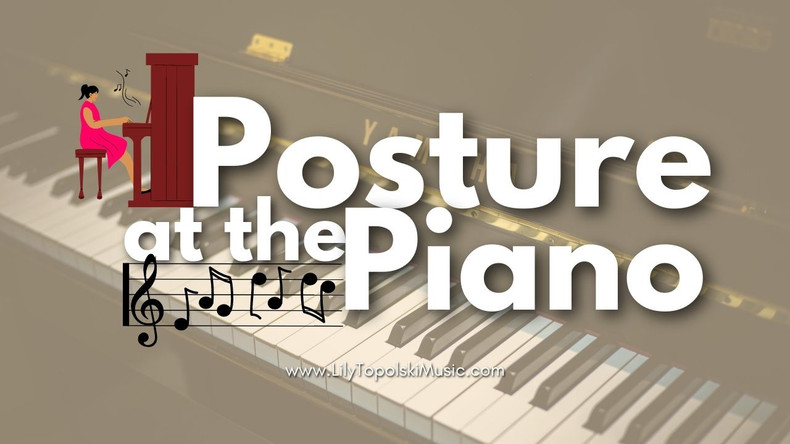Posture means everything! Incorrect posture or a set-up at your piano that is not rightly customized to your body can cause unnecessary struggle while playing. I have spent some time over the last few years tweaking my set-up and correcting posture and technique, and I want to share with you what I have discovered to hopefully help you at the piano!
Relax!
Make sure you are sitting on the edge of your bench with your back straight, arms relaxed, and fingers curved. Try to keep all of your muscles and joints relaxed, including your wrists. Doing this will help make playing easier as your movements will be more free. One thing you can do in between songs is shake out your arms and hands to loosen them. During a song, it can be very difficult to keep your body loose (especially when playing a hard piece), but I have learned two playing techniques that help me accomplish this even while playing.
Techniques
The two techniques I learned were in regards to the way I played. A few years ago, if I played a fortissimo song, I pounded it into the piano with all I had (my family and friends can attest to this!). This caused me all sorts of muscle tightness. I was taught these simple tricks by Josh Singletary and they were lifesavers!
Instead of pounding INTO the piano, play like you're pulling the sound OUT of the piano. This means that as you play, you will be pulling your fingers inward. Not too far inward, but enough to take the tension off your hands. This works for your wrists as well. Immediately after striking a fortissimo chord, pull your wrist upward and at the same time let your hand curve inward in a relaxed position toward your body. It should be as if a string is attached to the back of your wrist and pulling it upward with your hand relaxed. This is a motion that will loosen your wrists in the middle of a song. At first, I didn't like it because I thought it looked too flashy or expressive, but as I tried it I found it worth it since it loosened my muscles.
Bench Height
Something else that has helped me is making sure that my arms bend at a little more than a 90 degree angle (maybe 100 degrees) at the elbows. Your hands should never be above your elbow level and should always be just slightly below. This will actually improve your playing as well because you will have more leverage to play harder pieces.
If you are at your piano and find that your hands are above your elbows, there are a few things you can do to fix this.
1. If you have an adjustable bench, try raising it up until you reach the needed height.
2. If you don't have an adjustable bench, you can try getting a piano bench cushion or a regular seat cushion to raise you until you are at the right height. Note: you don't want to go too high, or you might cause your bench to dig into the back of your legs (I've been there and done that!). This leads to option three.
3. If you can't bring your bench any higher, you can also try lowering the keys. A couple of ways we have done this is to remove caster cups under an acoustic grand piano or to set a keyboard stand at its very lowest setting.
The picture below will show you what the difference in your arms should look like. It may not be exact (since it's a stick figure), but it gives you a good idea!

I hope this article has helped some of you! If you have any questions or comments, or even want to share some of the things that you have tried, feel free to contact us!
Blessings,
Lily

